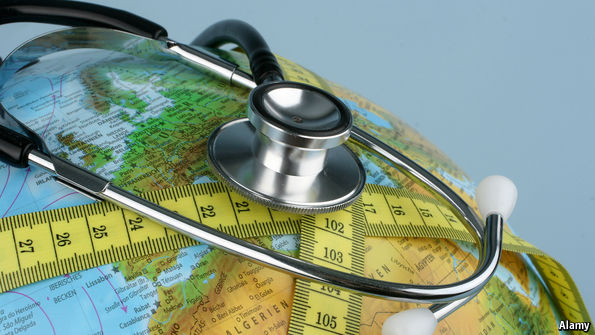Blogger Ref http://www.p2pfoundation.net/Transfinancial_Economics

LATER this week, the British government will announce its latest spending review. Its aim will be to balance the budget by 2020. In part, this is because the Conservative party genuinely believes a smaller state is good for economic growth in the long run. But is there a hard-and-fast relationship?
This is the kind of issue economists spend years researching. But your blogger pursued a simple approach; comparing the GDP per capita of OECD countries with government spending as a proportion of GDP. (Statistical purists should note; the latest figures on the former are from 2014 but the latter only go up to 2013.)
The OECD has data covering both measures for 26 countries. So step 1 was to rank the countries by government spending and then divide them into quartiles (six countries in the 1st and 4th quartiles, 7 countries in the 2nd and 3rd). The results were as follows
Highest spenders 40,285
2nd highest 36,399
3rd highest 50,070
Lowest 41,550
It is hard to spot any relationship from that grouping. As you can see, the highest spending group has roughly the same GDP per capita as the lowest spenders. The third quartile contains Luxembourg which, thanks to its huge financial services sector, has GDP per capita 50% higher than any other nation.
We can slice the data the other way and rank the countries by GDP per capita and then see what their government spending is.
Quartile Govt spending as % of GDP
Richest 40.9%
2nd richest 51.6%
3rd richest 44.8%
Poorest 46.9%
At first glance, things look more promising for the small-staters. The poorest quartile of countries has higher spending than the wealthiest. But look at the second richest quartile; it spends a lot. If you divided the whole group into two halves, then the richest countries spend 46.6% of GDP on government and the poorest 45.7%.
Now, of course, a lot more sophisticated analysis can be done, covering growth rates etc; the rate of government spending in any given year also depends on the health of the economy (thanks to unemployment benefits etc).
But this rough-and-ready analysis shows it is unwise to be too dogmatic. Most countries have a mixed economy with public and private sector involvement; more than two-thirds of governments in this sample spend between 40% and 55% of GDP. Clearly the history of communism shows that total government control is bad for growth. Sweden's experience since the 1990s suggests that a mixed economy can benefit from a reduction in the state if it becomes too large. However, the developed world is ageing and there may be a natural tendency for government spending (on pensions, health) etc to grow larger over the next few decades. Instead of shrinking the state, government might find they are running hard to stay in the same place.

Thanks...
ReplyDelete3D Prototype Printing Services